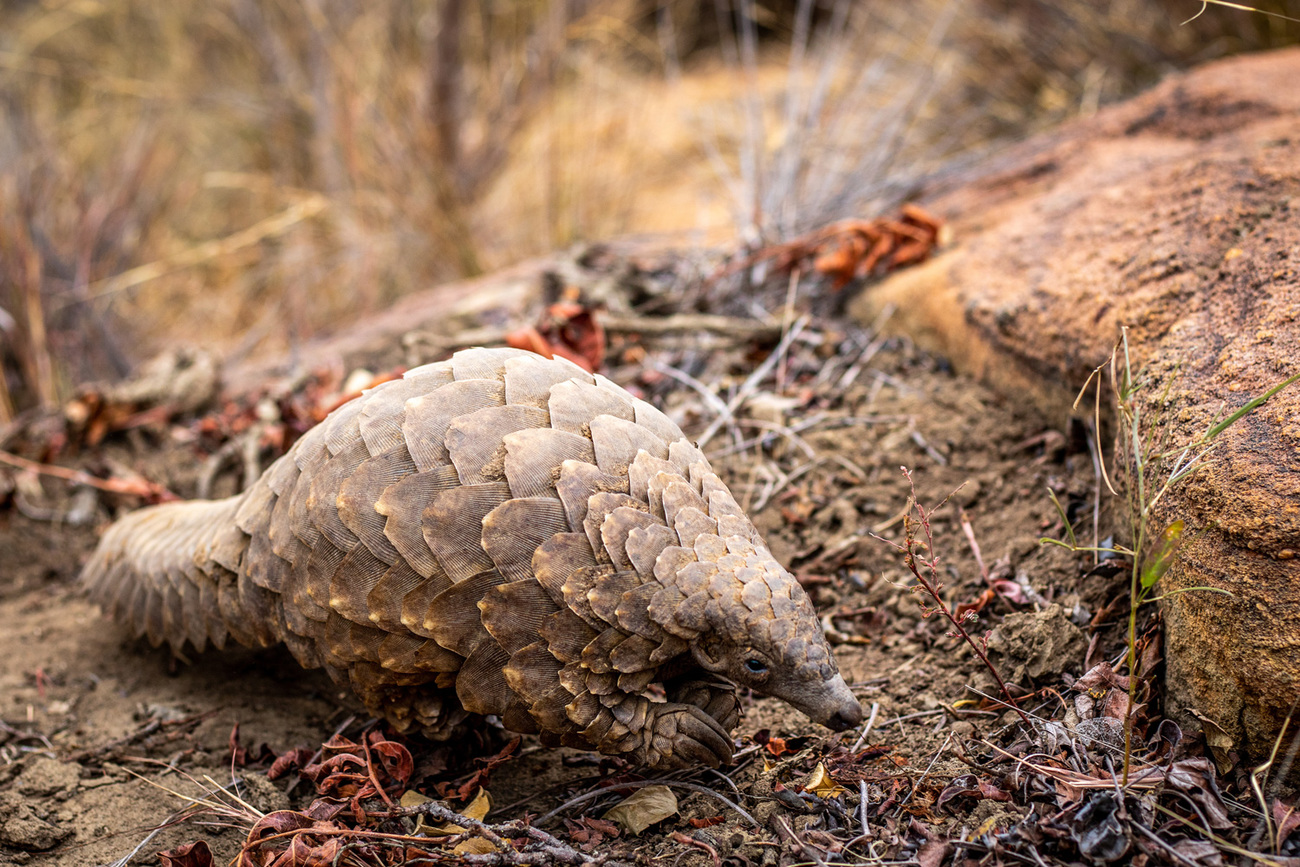Blog
Discover the four layers of the forest—and the animals living in it
Read more
Illegal trade in wild animal meat, or bushmeat, is ubiquitous and can lead to enormous risks for animal welfare and global biodiversity, but also for public health. Let’s take a closer look at what bushmeat is, and why it poses significant problems for animals and people.
Bushmeat is a collective term for meat derived from wild mammals, reptiles, amphibians and birds that live in the jungle, savannah or wetlands. Bushmeat comes from a variety of wild animals, including monkeys, pangolins, snakes, porcupines, antelopes, elephants and giraffes.

For thousands of years, bushmeat consumption has been the norm and an important source of protein in many African, Latin American and Asian countries. This is especially true for remote areas where it is difficult to raise livestock, and bushmeat is often the only available or affordable source of protein. It is estimated that in rural regions of West and Central Africa, bushmeat constitutes 80–90% of animal protein intake.
If bushmeat consumption were limited to indigenous and local communities hunting only for subsistence, it wouldn’t be such a critical contributor to biodiversity loss. The bigger problem is the growing demand for wild animal meat in cities and abroad, where it is considered a delicacy by some. In segments of the African and Latin American diaspora in Europe and North America, for example, eating bushmeat remains popular because it reminds many of their countries of origin.
With its growth in popularity, the illegal bushmeat trade has become a global industry. Researchers estimate that over five tons of wild animal meat is smuggled into Europe weekly through Paris Roissy-Charles de Gaulle airport in France alone. Every year, some six million tons of bushmeat is harvested in Central Congo and the Amazon.
Animal populations are coming under pressure due to large-scale poaching for bushmeat. The situation is especially grim for slower-reproducing animals such as great apes and elephants, which are at risk of extinction due to a combination of poaching and shrinking habitats. Bushmeat is considered one of the most immediate threats to African wildlife.

Hunting wild animals for consumption also poses major health risks to humans. Many diseases have their origins in wild animals such as monkeys and bats. According to the World Health Organization, 75% of the 30 diseases that have emerged in the last three decades are zoonoses—infections transmitted from animals to humans. Well-known examples of zoonoses include HIV-AIDS, Ebola, Lyme disease, malaria, rabies and recently, COVID-19. It is important to note that it’s not only the illegal wildlife trade that’s responsible for these zoonoses, but also the intensification of animal husbandry.
Beyond the global emergence of new diseases, illegally imported bushmeat also carries the risk of infecting animal species in other countries.
IFAW is actively fighting various forms of wildlife crime. For example, to combat smugglers, we train customs officers and law enforcement to crack down on illegal wildlife imports. We also work with major online platforms to prevent them from facilitating the trade in wildlife products. We have launched public campaigns worldwide to reduce demand.

Together with governments and partner organizations, we are working on effective global, regional, national and local legislation and policies to protect individual wild animals, entire populations and their habitats.
Our work can’t get done without you. Please give what you can to help animals thrive.
Unfortunately, the browser you use is outdated and does not allow you to display the site correctly. Please install any of the modern browsers, for example:
Google Chrome Firefox Safari